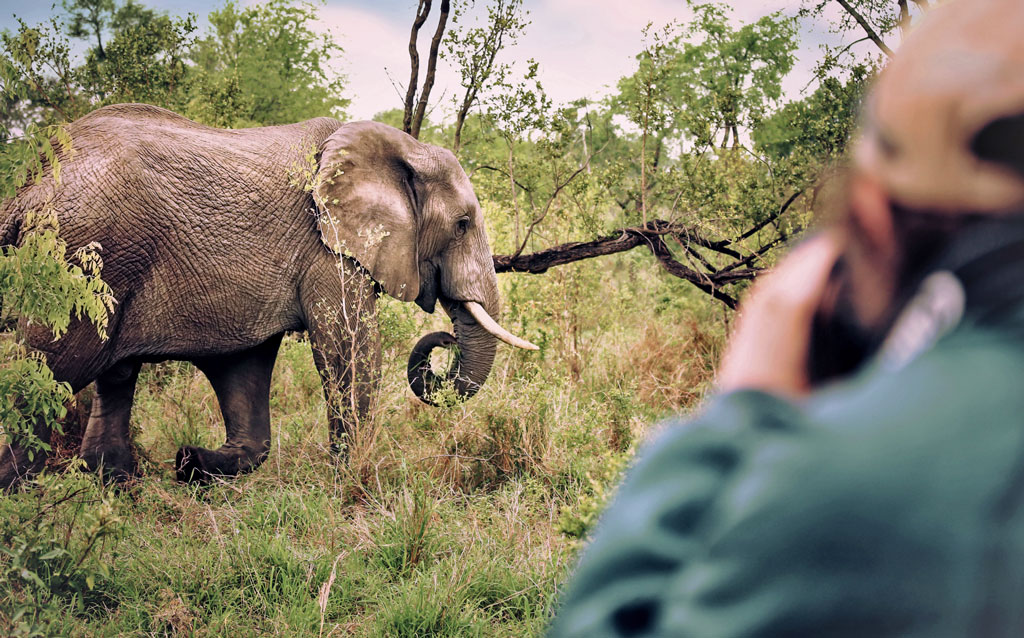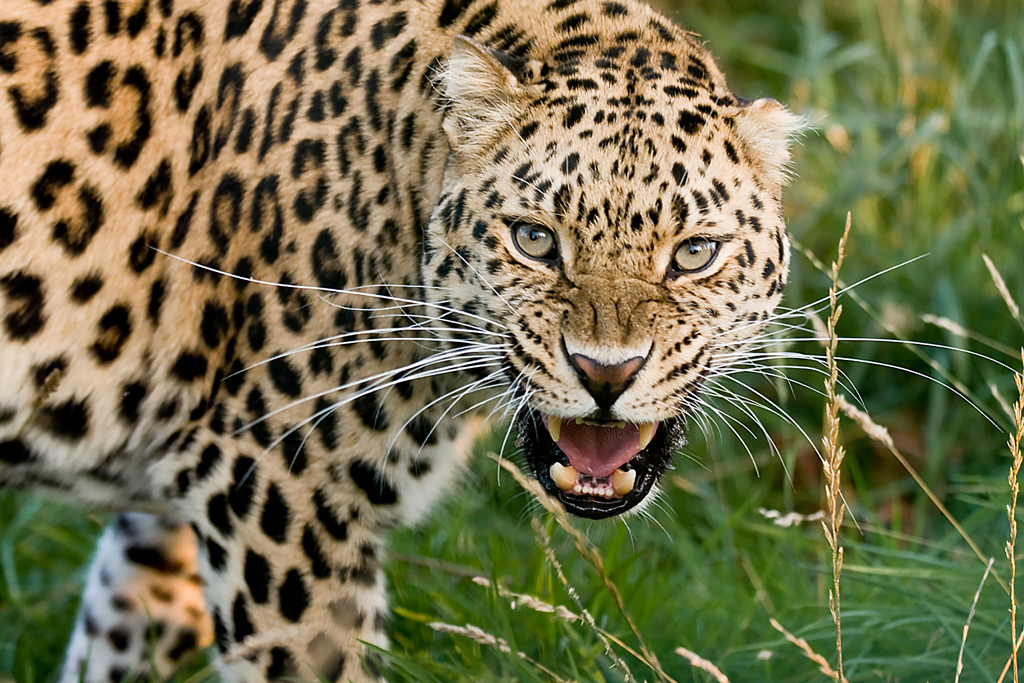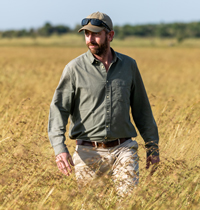Grabbing the lion by the tail - intervention vs interference
Published on:20/10/2021
Posted by: Jamie Paterson - AG scientific editor
Intervene (verb): To come in or between so as to affect, modify, or prevent a result, action, etc.
Interfere (verb): To meddle with; to interpose and take part in something, esp. without having the right to do so; to intermeddle.
~ Oxford English Dictionary, 2021
Intervention, interference – should we or shouldn’t we?
A few years ago, I decided to pull an antelope out of the mud of a drying, man-made dam (I was not alone, but my fellow conspirators will have to remain nameless). Until now, only a handful of people knew about this because we were given strict instructions not to help the antelope as per the reserve’s policy. We claimed it had escaped on its own and hid the mud-splattered evidence. We intervened. Quite possibly, we interfered.
From a human perspective, there are times when nature seems abominably cruel. For instance when young animals are allowed just a brief glimpse of their new world before being snatched up by an opportunistic predator. Or when hundreds of wildebeest are crushed beneath the hooves of their fellows crossing the Mara River during the Great Migration and wretched elephants are eaten alive by hyenas while trapped in the dried, cracking mud of dry season Mana Pools. Not for nothing has the phrase “circle of life” become such a popular refrain – for wild animals, death begets life and life almost invariably means a painful, frightening death.
So, when, if ever, should people intervene?
https://youtu.be/gqKANFx0WTM
A spectrum of grey
In my opinion, there is no question that there is a moral imperative to treat (or euthanise) a wild animal when an injury or disease is anthropogenic in origin, assuming resources allow for such intervention. This applies to bullet and spear wounds, snare injuries, vehicle strikes, animals trapped in fences, canine distemper, animals orphaned due to poaching and so on. For most, this is not a grey area. On the opposite side of the spectrum, a lion pride stalks and kills a buffalo under a natural set of circumstances (difficult in itself to define) – intervention here would clearly be interference with the natural order of things.
Between these two scenarios lie any number of combinations of different situations where deciding whether or not to intervene is not so black and white. What if the animal is starving due to drought conditions arguably brought about by climate change and unable to disperse due to fences? What if the lions are stalking a black rhino calf? What if an animal is so grievously injured that death is inevitable but, before then, only pain and suffering lie ahead?
When I chose to pull the duiker out of the dam, I meant no disrespect to the decision-makers in the reserve and I do not stand in judgement of their decision. I value the collective needs of an ecosystem over the individual welfare of one animal. I do not believe that natural injuries or diseases in wild animals warrant human intervention under normal circumstances. In this instance, I reached a different conclusion to management – I believed intervention was warranted because the dam was man-made, and we could save the duiker without any cost or risk.
Truth be told, it was a far easier decision to make because I was, largely, divorced from the consequences and the potential slippery slope that any such official decision could potentially precipitate. The unfortunate duiker had already been broadcast on a live safari and if management had set an example by saving it publically, there is no telling where it would have ended.
The slippery slope and trial by social media
Throughout Africa, formally protected areas are faced with this choice on a regular basis and make no mistake, it is seldom treated lightly. (For the sake of clarity, I am referring to large, “open system” protected areas, not smaller fenced reserves which, by necessity, require a more hands-on approach.)
A few decades ago, gruff ecologists and rangers in khaki shorts would have made their decision in the privacy of the wild, guided by their scientific knowledge, moral codes, and practical realities. (Of course, the flipside to this is that they were seldom held to account and, unmonitored, were free to act with relative impunity.) Today distressing images of injured or diseased animals are splashed across social media pages, invariably accompanied by entreaties to find it, treat it, save it. Especially when the animal concerned is a big cat or charismatic animal. If the animal happens to be a wild celebrity with a name, even more so.
In many instances, particularly in East Africa, the animal is treated regardless of whether its ailment has been caused by people. Again, the animal concerned is almost always a charismatic one. (A personal observation is that there are geriatric male lions wandering around that look a bit like Frankenstein creations held together by nylon stitches.) The social media announcements of successful intervention (interference?) are met with resounding applause.
Other reserves adopt a policy often referred to as “non-interference” unless the animal has been compromised by humans. To my mind, this is a patently ridiculous way to label it. There is no question that we interfere daily. The landscape is crisscrossed by roads, noisy cars harass animals and cause off-road damage and spotlights are flashed into the eyes of unimpressed animals. Most importantly, we have ensured permanent surface water (usually in front of lodges for the benefit of tourists) in entirely unnatural areas. Along with fences, this must be one of the single greatest acts of interference possible and has come at great expense to the surrounding biodiversity.
However, choosing “not to intervene based on a scientifically sound intention to avoid further damage to ecological integrity” is entirely valid (assuming that we have the science to back it up and the self-awareness to admit when we do not). This is not a popular approach. The social media comments turn vicious and even abusive if the decision is made not to help the animal and exclamations of disgust and accusations of cruelty are flung indiscriminately from armchairs across the globe.
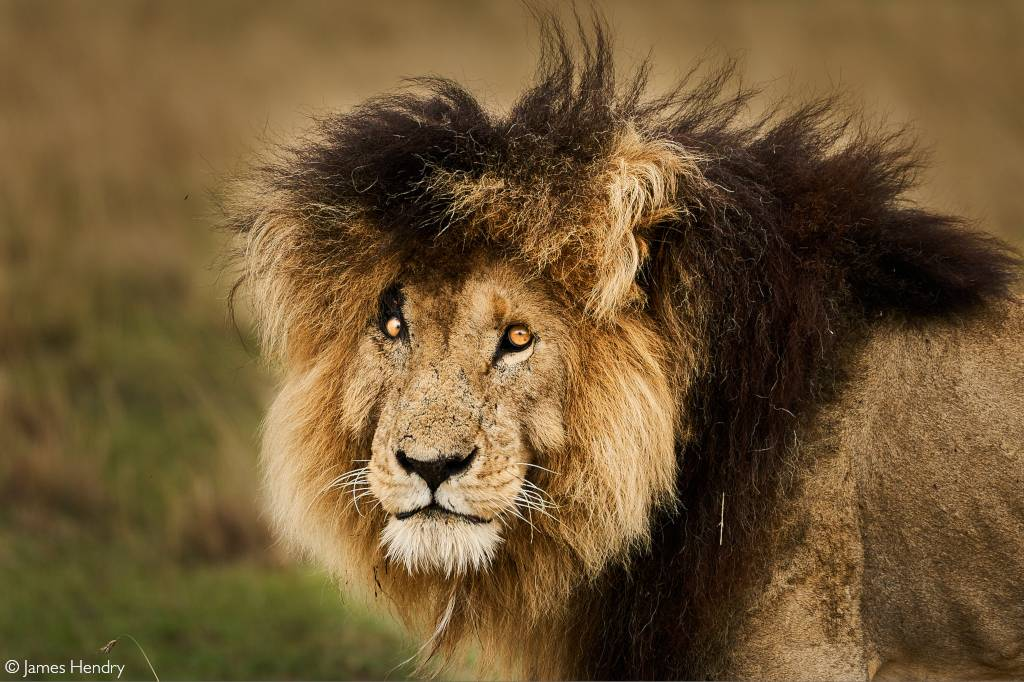 Scarface (now deceased) – a much-helped lion of the Maasai Mara.
Survival of the fittest?
Scarface (now deceased) – a much-helped lion of the Maasai Mara.
Survival of the fittest?
Most people have a rudimentary understanding of the idea that Nature maintains a dynamic equilibrium. This is a constantly changing ecosystem (life, resources, climate etc) that is prevented from tipping to collapse by injuries, disease, parasites, predators, weather patterns and various other natural phenomena. When this balance is shifted to far beyond ‘normal’ parameters in an interlinked ecosystem, something pays the price. A simple example: a large population of elephants unable to disperse will have a significant impact on the vegetation and, eventually, the balance of the ecosystem.
A second consequence of the natural ebb and flow of life, dominance and death is that there is a constant flow of fresh genetic material. For example, male lions are typically only dominant over an area for a few years before they are displaced by younger, fitter lions pumped full of testosterone and ready for a fight. Injuries and even death are common during these territorial takeovers and it spells death for all cubs under a certain age. If this does not happen, male lions will likely mate with their own daughters when they reach sexual maturity. If, for example, a male lion is stitched together every time he has a scrap with an interloper, the risk of harmful inbreeding is amplified.
The most common response to this argument is that intervention is warranted because wildlife populations have plummeted and most charismatic animals (people seldom kick up a fuss for an injured Thomson’s gazelle or even a spotted hyena) are now either endangered or vulnerable. Furthermore, we have reduced available land, put fences across migration routes and affected natural climates through our determination to continue pumping carbon dioxide into our atmosphere. In essence, we have changed the game, we have made these animals into assets in unnatural settings, so we have a responsibility to help individual animals regardless of the consequences (essentially, this is an example of deontological ethics).
The cost of reality
But there are consequences beyond the inherent ‘rightness’ of helping a suffering animal. First, as discussed, natural injuries and deaths are part of a system that prevents overpopulation and the knock-on effects on the rest of the ecosystem. While the animal concerned may be endangered, its species is often present in healthy numbers across Africa’s large, protected areas.
The second major consideration is the literal cost of intervention, which can skyrocket into hundreds if not thousands of dollars depending on the circumstances. Helicopters, medication and veterinary skills all cost money. However, so does running a reserve – from maintaining fence lines and roads to running intricate anti-poaching operations and community initiatives. All of which are arguably of greater value to conserving a region than treating individual resident animals. It is a fortunate reserve indeed that has a bottomless supply of cash.
Jumping in every time an animal suffers a natural injury is simply not a justifiable expense for most reserves (unless it brings social media acclaim and visitors, a darker aspect of the reality of marketing). This may seem cold, clinical, and calculating but it is often a necessary decision, judged by those with little comprehension of the realities on the ground. ‘Uneasy lies the head that wears a crown’ …
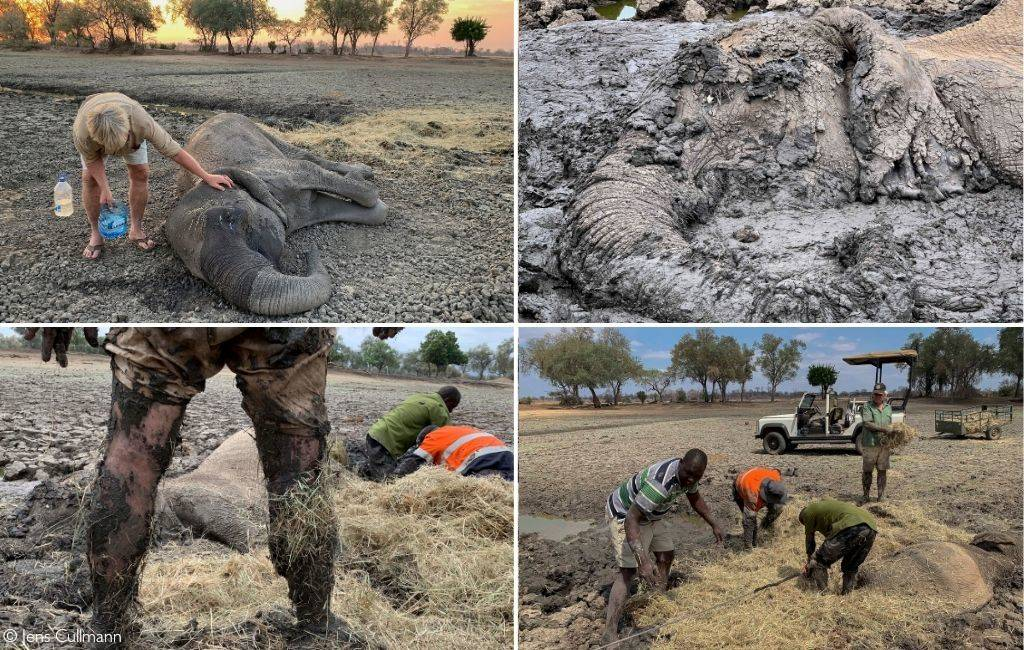 This rescue operation in Zimbabwe’s Mana Pools ultimately failed – the cow unfortunately succumbed. Her calf was placed in the Wild is Life Elephant Orphanage in Harare and was thriving as of December 2020.
A case for compassion?
This rescue operation in Zimbabwe’s Mana Pools ultimately failed – the cow unfortunately succumbed. Her calf was placed in the Wild is Life Elephant Orphanage in Harare and was thriving as of December 2020.
A case for compassion?
Perhaps the above paints an unfeeling picture of those involved in conservation or working in protected areas, but this has been far from my experience in reality. The truth is that very few people are able to view the suffering of an animal with dispassion, even those who are at least partially inured to it by virtue of exposure. The fact that there are circumstances when the collective good must come before the welfare of an individual animal does not mean that this decision is made without a heavy heart. Decisions should be made compassionately and every situation must be judged on its merits.
When death is inevitable, and it lies within our power to mercifully end suffering, should we do it? The answer to that question lies with every individual. I have done it; I know others who have, and I suspect it happens more than we realise. It happens on the quiet these days, because creating an expectation of intervention is a bit like grabbing a lion by the tail.
Treading familiar ground in new boots
This is not a new discussion, nor is it unique to an African context. Animal welfare scientists, ethicists, conservationists, and guides discuss it ad nauseum in academic articles and within their own circles. Just over a century ago, shooting African painted wolves (wild dogs) on sight was considered to be good conservation practice to protect antelope. A few decades later, boreholes were drilled into the arid sections of the Kruger National Park. Windmills sprung up and life-bringing water flowed where it never had before. These artificial waterholes were closed when their negative effect on the region was realised.
The point is that our changing understanding of good conservation practice has shown a gradual movement towards letting nature get on with things and lending a helping hand only where necessary, to fix what we have broken. There are several academic papers warning against interference in natural processes. In a seminal essay entitled “Ethics of Interventions for the Welfare of Free-Living Wild Animals”, Kirkwood and Sainsbury (1996) icily write that “sentient creatures have suffered episodes of severe pain and distress from disease and injury for well over a hundred million years before humans evolved to a stage at which they could contemplate this or consider doing anything about it.” Of course, we can do something about it now. There are those that argue that times have changed, our ethics have evolved and the intrinsic value of an individual wild animal justifies our intervention.
In every age, we’ve presumed to have the correct answers. Is this age going to be different or will our grandchildren look back at our conservation decisions with the same frustration we feel towards those who pumped Kruger full of water?
What does the nebulous ‘Greater Good’ justify? If it benefits the reserve in terms of tourism revenue, is it acceptable to bow to the pressure and intervene or risk censure and boycotts?
The monster that is social media has allowed inexpert scrutiny and savage pressure to fall on decision-makers charged with keeping our wild areas safe. The looming threat of climate change has created a blanket justification for any kind of intervention due to weather changes and resource availability. Never before has drawing the line between intervention and interference been so complicated.
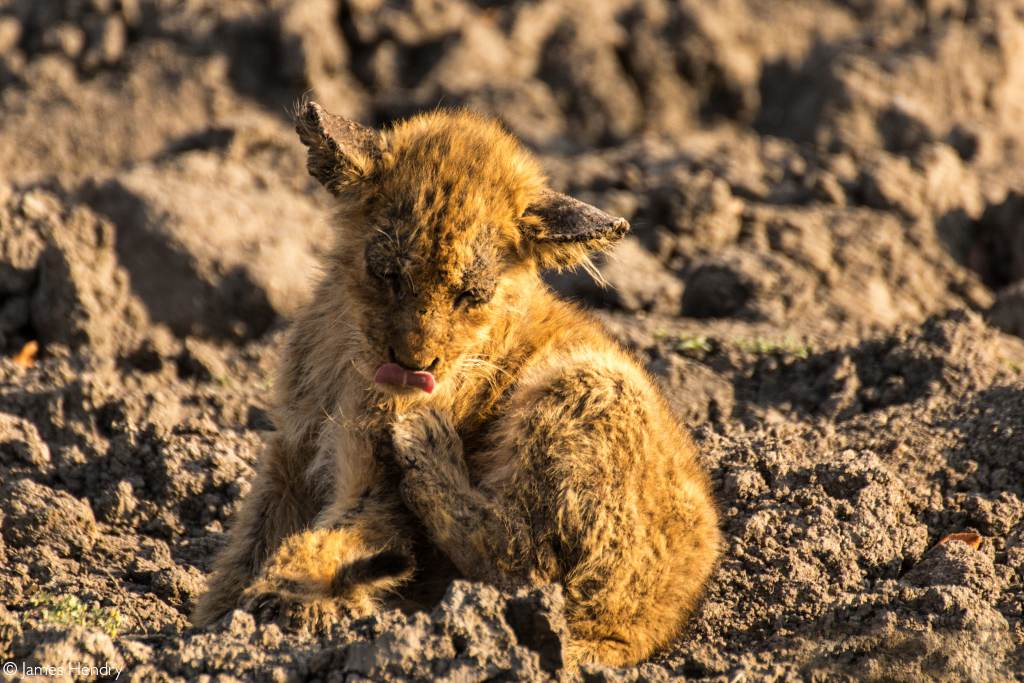 This lion cub and her pride were decimated by mange. The authorities of the reserve concerned decided not to intervene because mange is a naturally occurring disease in the area.
Conclusion
This lion cub and her pride were decimated by mange. The authorities of the reserve concerned decided not to intervene because mange is a naturally occurring disease in the area.
Conclusion
Yet it is a deeply personal line that must be drawn by those who bear the burden of that responsibility. A policy is a fine thing but beyond a certain point, nuances of circumstance have to be judged by individuals based on their own understanding and ethics.
As I lay in bed the night after we rescued the duiker, I did not feel particularly good, but I knew I would have felt worse if we had left her to die. It was my line in the sand (or mud, in this case) and having had to draw it, I would be hard-pressed to judge others for where they choose to draw theirs.






